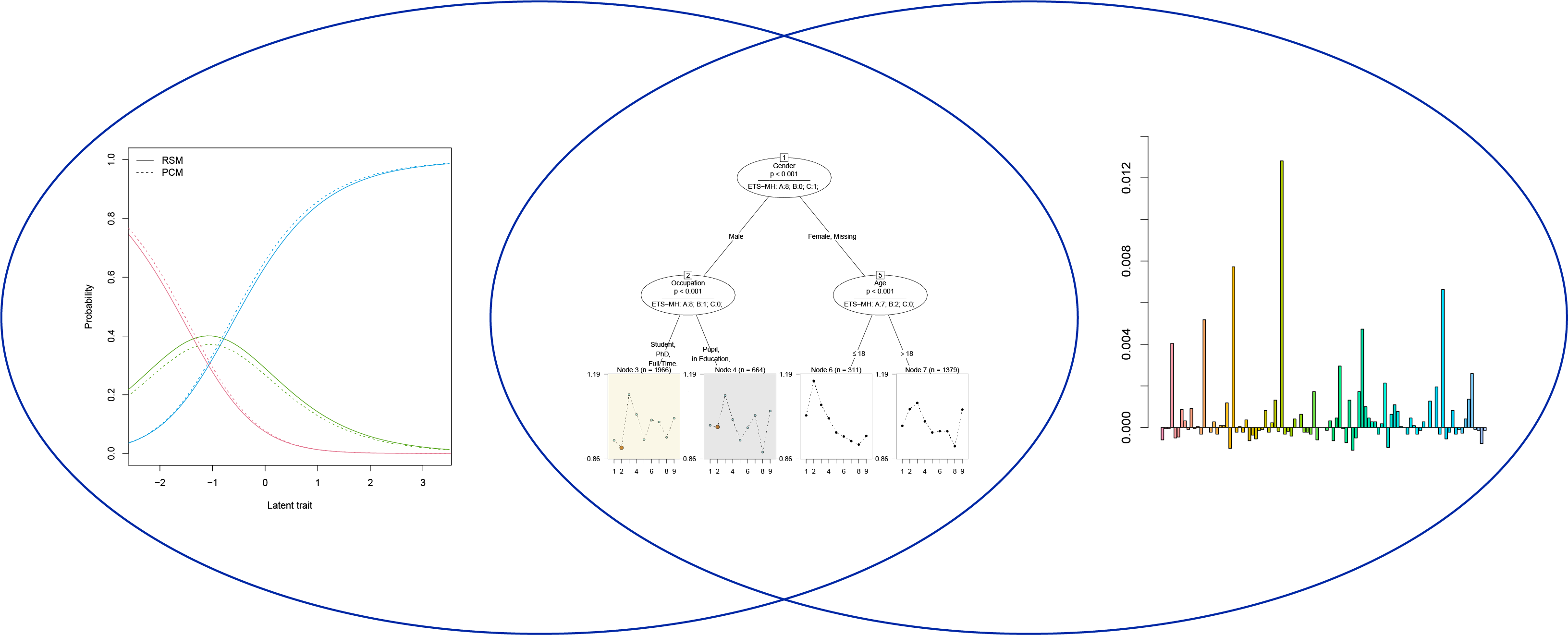Research
The chair for Psychological Methods, Evaluation, and Statistics conducts methodological research at the intersection of statistics, psychometrics and machine learning.
For example, we develop methods for detecting parameter differences in psychometric models, because these can violate the fairness or psychological tests. Some of these methods are based on classical, parametric statistics, others on approaches from machine learning.
In machine learning, we develop methods for assessing stability and for measuring and interpreting the contributions of predictor variables in a reliable way. These topics are also relevant to some of our work in psychometric computing.
In all research areas we contribute to the development of add-on packages for the free open-source software R. These R packages are listed below.
Psychometrics |
Psychometric Computing |
Machine Learning |
Examples of research projects with third-party funding
For further topics see Publications
SNF project
Development of a Toolbox for Psychological Test Development
SNF project
Detecting Heterogeneity in Complex IRT Models for Measuring Latent Traits
BMBF project
Heterogeneity in IRT Models
DFG project
Methods to Account for Subject-Covariates in IRT-Models
Collaborations
BRIDGE Discovery project
Harnessing event and longitudinal data in industry and health sector through privacy preserving technologies
SNF Sinergia project
MULTICAST- A MULTIdisCiplinary Approach to prediction and treatment of Suicidality
DSI project
PREMIA - A Prediction Market with Integrated Algorithms
